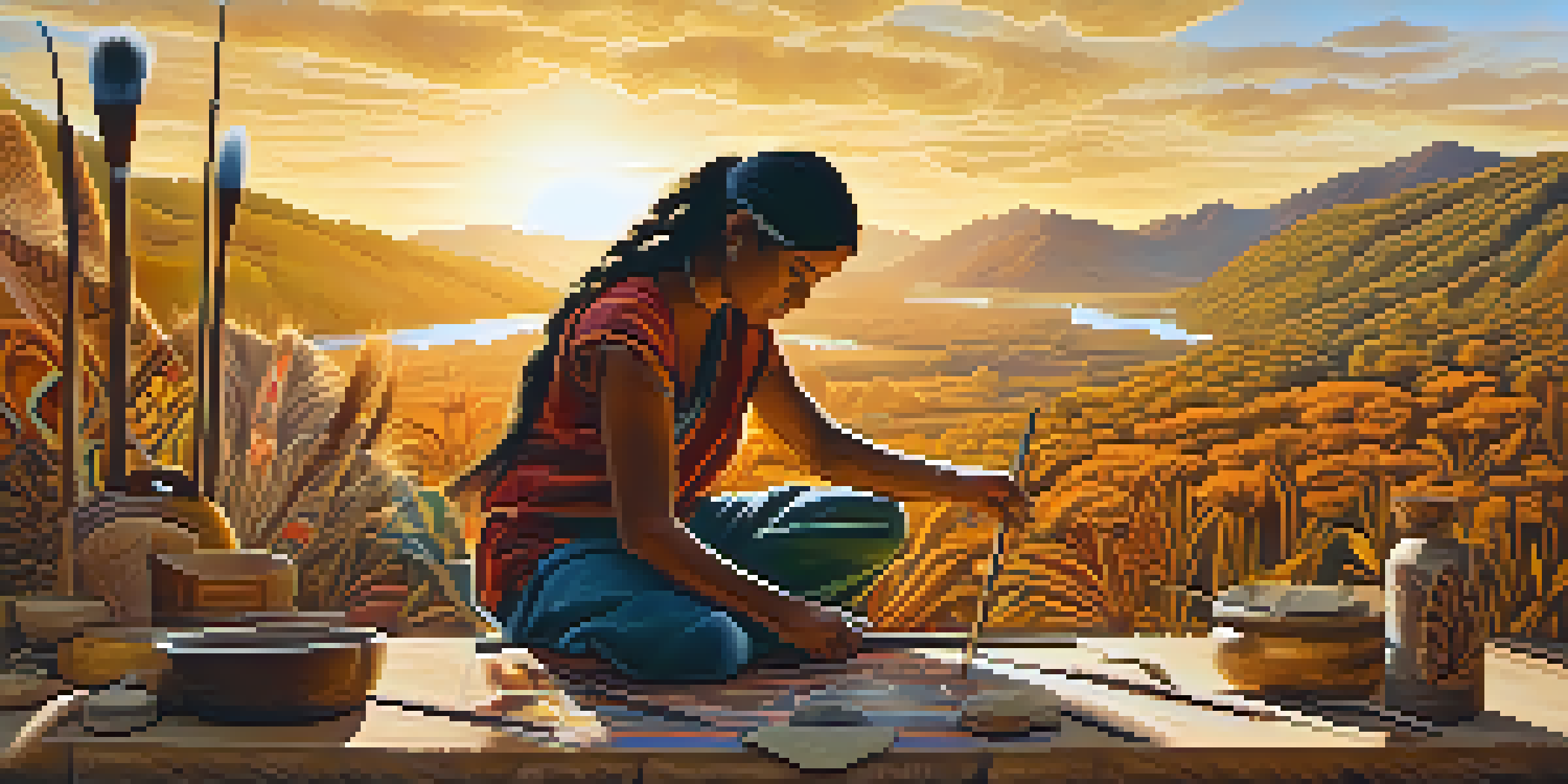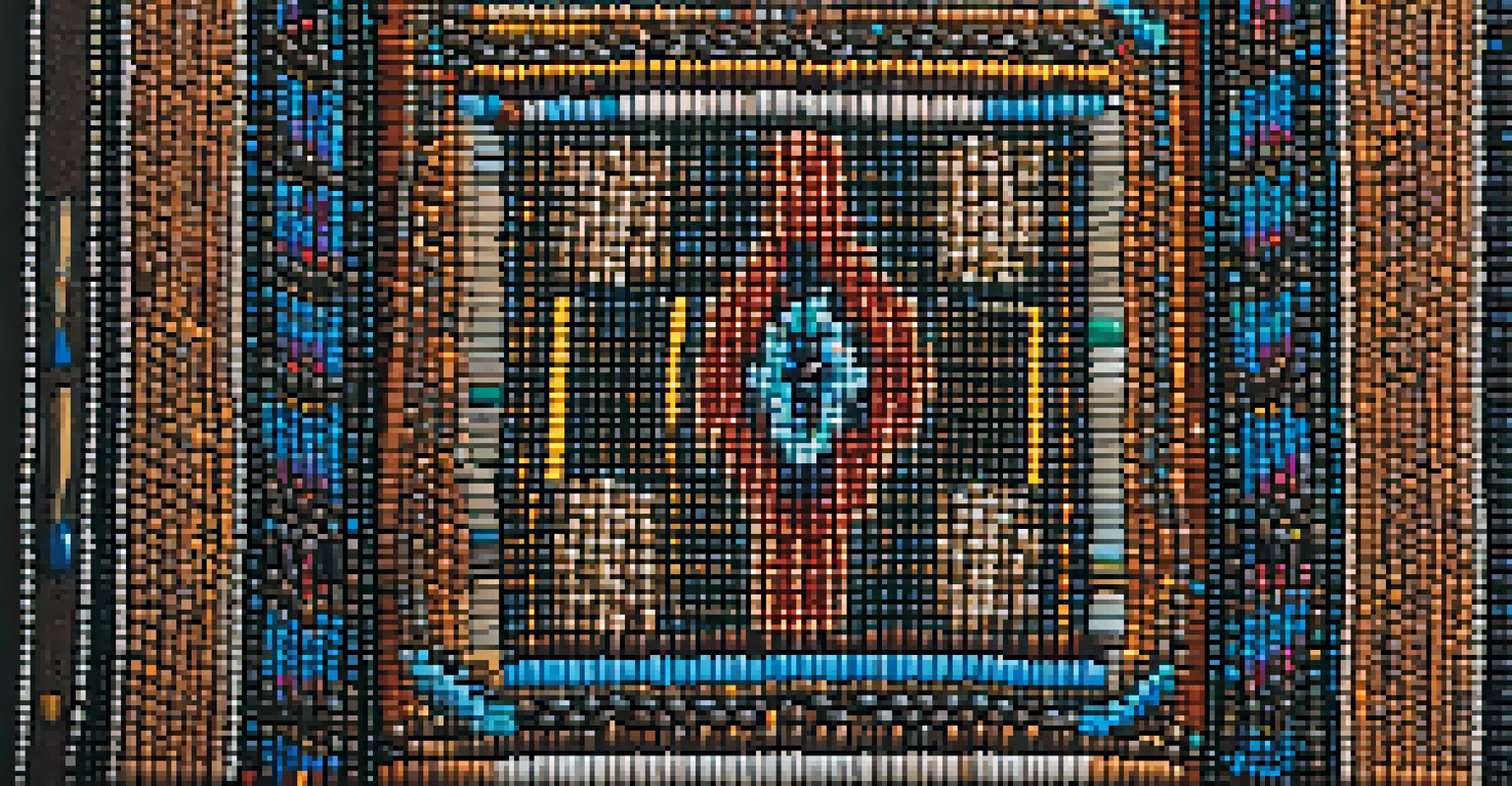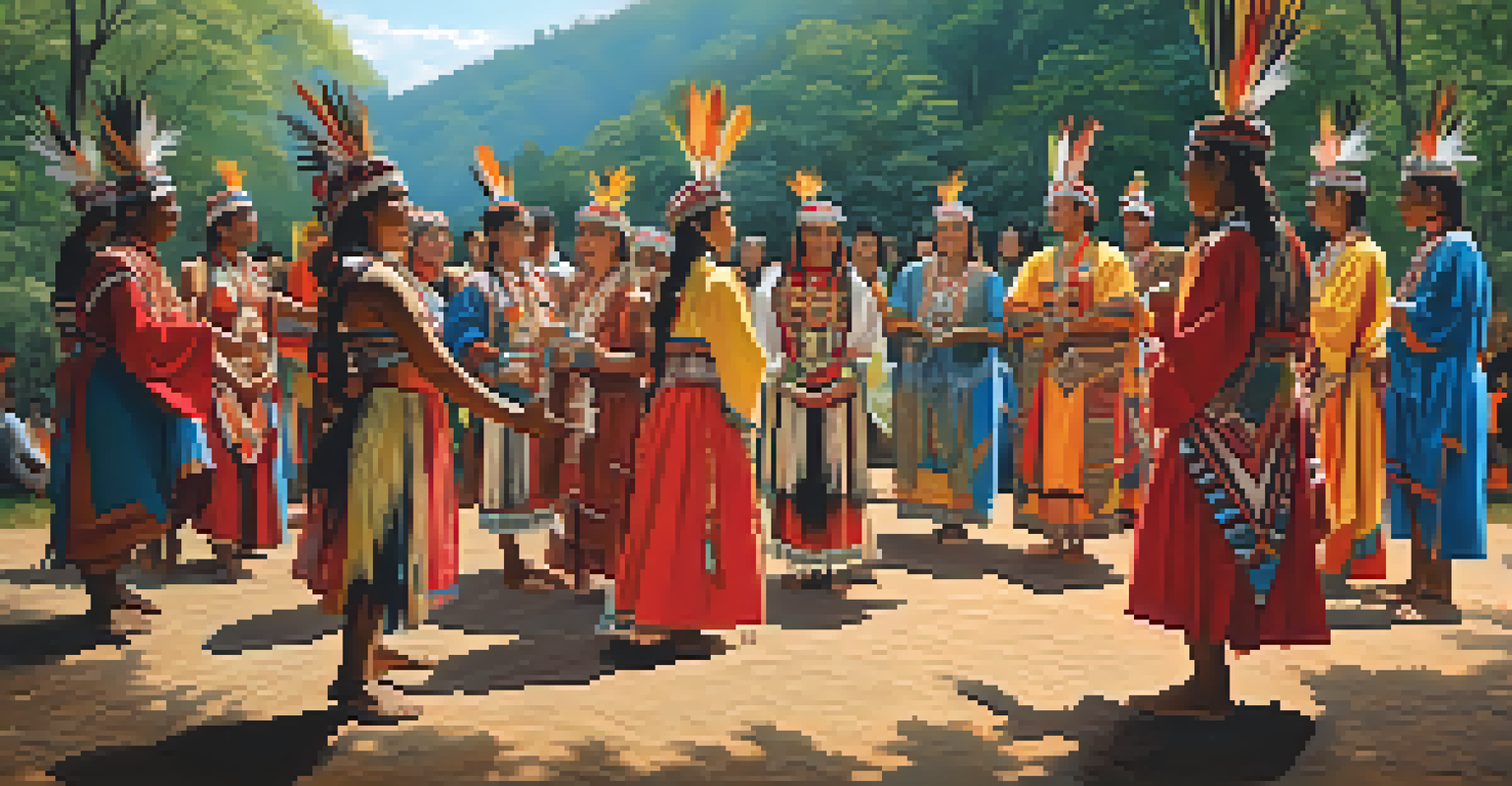Exploring Spirituality in Indigenous Art and Cultural Practices

Understanding the Role of Spirituality in Indigenous Cultures
Spirituality is a cornerstone of Indigenous cultures, serving as a lens through which the world is interpreted. It encompasses beliefs, rituals, and practices that are deeply intertwined with the natural environment and communal life. For Indigenous peoples, spirituality is not just a belief system; it's a way of life that informs their connection to land, ancestors, and community.
Art is the most beautiful of all lies; it is a mirror that reflects the truth of human experience.
This holistic approach means that spirituality is reflected in every aspect of Indigenous culture, including art. Each piece of art tells a story or conveys a message about the spiritual world, bridging the gap between the material and the ethereal. For example, many Indigenous artists draw inspiration from nature, seeing the divine in landscapes, animals, and celestial bodies.
Understanding this connection requires an appreciation of how Indigenous peoples view their place in the world—often as caretakers rather than conquerors. This perspective fosters a profound respect for the Earth, which is evident in the themes and materials used in their art.
The Influence of Nature on Indigenous Artistic Expression
In Indigenous art, nature is more than just a backdrop; it is a vital source of inspiration and spirituality. Many Indigenous artists use natural materials—such as clay, wood, and stone—to create their works, emphasizing the connection between the artist and the environment. Each chosen material often carries its own spiritual significance, reflecting the beliefs of various tribes and cultures.

For instance, the intricate patterns found in Native American beadwork often represent different elements of nature, from animals to plants, symbolizing the interconnectedness of all living things. This artistic practice not only beautifies objects but also serves as a reminder of the spiritual relationship Indigenous peoples hold with their surroundings.
Art as a Tool for Social Justice
Indigenous artists leverage their work to advocate for rights and raise awareness about issues affecting their communities.
Moreover, this relationship with nature extends to storytelling, where art becomes a medium to share legends and teachings. By depicting natural scenes or spiritual beings, artists keep these stories alive, ensuring that younger generations understand the profound lessons embedded in their cultural heritage.
Rituals and Ceremonies: Art as a Spiritual Practice
Rituals and ceremonies play a significant role in Indigenous cultures, often involving artistic expression that reinforces spirituality. Whether it's a dance, song, or visual art, these practices serve as a means of connecting with the spiritual realm. For example, many tribes incorporate art into their ceremonies, using it as a tool for healing, celebration, or remembrance.
The past is never dead. It's not even past.
In many cultures, creating art for rituals is not merely about the final product; it's about the process itself. The act of crafting can be meditative and spiritually enriching, allowing artists to channel their energy and intentions into their work. This transformative experience fosters a deeper connection to their heritage and spiritual beliefs.
Furthermore, the communal aspect of these rituals reinforces the collective identity of Indigenous peoples. By participating in these events, members of the community strengthen their bonds while honoring their shared spiritual and artistic traditions.
Symbolism in Indigenous Art: A Language of the Spirit
Indigenous art is rich with symbolism, often conveying complex spiritual ideas through visual representation. Each symbol can tell a story or represent a belief, creating a visual language that transcends words. For example, the spiral is a common motif in many Indigenous cultures, symbolizing growth, transformation, and the cyclical nature of life.
Artists may incorporate animals, plants, and celestial symbols into their work, each carrying specific spiritual meanings. This symbolism allows Indigenous peoples to communicate their beliefs and values, preserving their cultural identity while adapting to changing times. For instance, the eagle often represents strength and freedom, serving as a powerful symbol in various artworks.
Spirituality Shapes Indigenous Culture
Spirituality is integral to Indigenous cultures, influencing their connections to land, community, and artistic expression.
By understanding these symbols, viewers can gain insights into the spiritual beliefs of Indigenous communities. This connection not only enriches the experience of engaging with the art but also fosters greater appreciation for its cultural significance.
Contemporary Indigenous Artists: Bridging Past and Present
Contemporary Indigenous artists are redefining traditional practices, blending age-old techniques with modern influences. These artists often explore themes of identity, colonization, and spirituality, creating works that resonate with both Indigenous and non-Indigenous audiences. By doing so, they forge a dynamic dialogue between the past and present, honoring their heritage while addressing contemporary issues.
For example, artists like Rebecca Belmore and Kent Monkman incorporate multimedia and performance art to express their cultural narratives. Their works challenge viewers to think critically about history and its impact on Indigenous communities, using art as a powerful tool for activism and awareness.
This blending of old and new not only revitalizes Indigenous art but also ensures its relevance in today's world. As contemporary artists continue to explore spirituality through their work, they invite us all to reflect on the broader human experience and our connections to one another.
Preservation of Indigenous Spirituality Through Art
As globalization continues to impact Indigenous communities, the preservation of spirituality through art becomes increasingly vital. Artists play a crucial role in keeping traditions alive, passing down stories, symbols, and techniques to the next generation. This continuity not only strengthens cultural identity but also fosters a sense of belonging and pride.
Workshops, community events, and exhibitions provide platforms for sharing traditional practices and educating others about their significance. By engaging with younger artists and community members, seasoned artists ensure that these spiritual connections remain intact, adapting them for modern contexts while respecting their roots.
Nature Inspires Indigenous Art
Indigenous artists draw inspiration from nature, using materials with spiritual significance to convey their beliefs and stories.
Moreover, the rise of digital platforms allows for wider dissemination of Indigenous art, reaching audiences globally. This visibility helps to raise awareness about Indigenous spirituality, inviting dialogue and understanding that can bridge cultural divides.
The Impact of Art on Social Justice and Indigenous Rights
Art has always been a powerful medium for social change, and Indigenous artists are increasingly using their work to advocate for rights and justice. By expressing their spiritual beliefs and cultural narratives through art, they challenge stereotypes and raise awareness about the issues facing their communities. This activism is not only vital for their own communities but also for fostering a greater understanding among the wider public.
For example, art installations and exhibitions can serve as platforms for storytelling, allowing Indigenous voices to be heard in discussions about land rights, environmental protection, and cultural appropriation. Artists often collaborate with activists to create works that highlight these critical issues, merging creativity with advocacy.

This intersection of art and social justice not only empowers Indigenous communities but also invites non-Indigenous people to engage with these narratives. Through art, a deeper appreciation for Indigenous spirituality and culture can emerge, fostering empathy and support for their struggles.